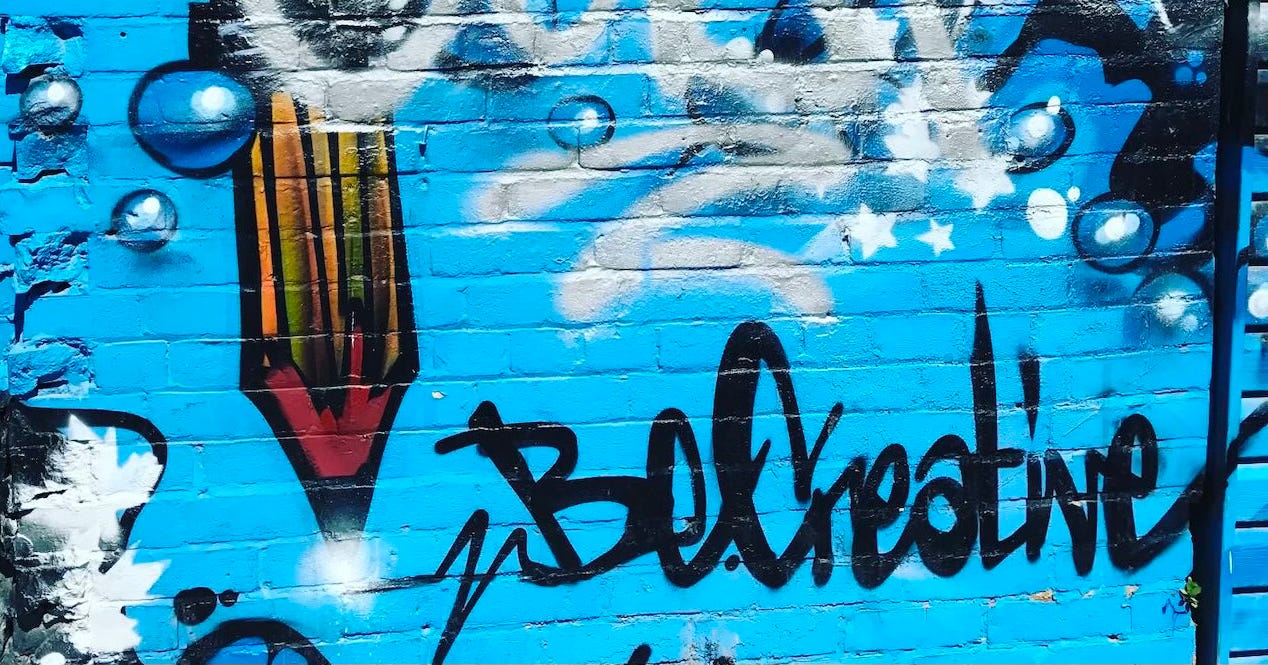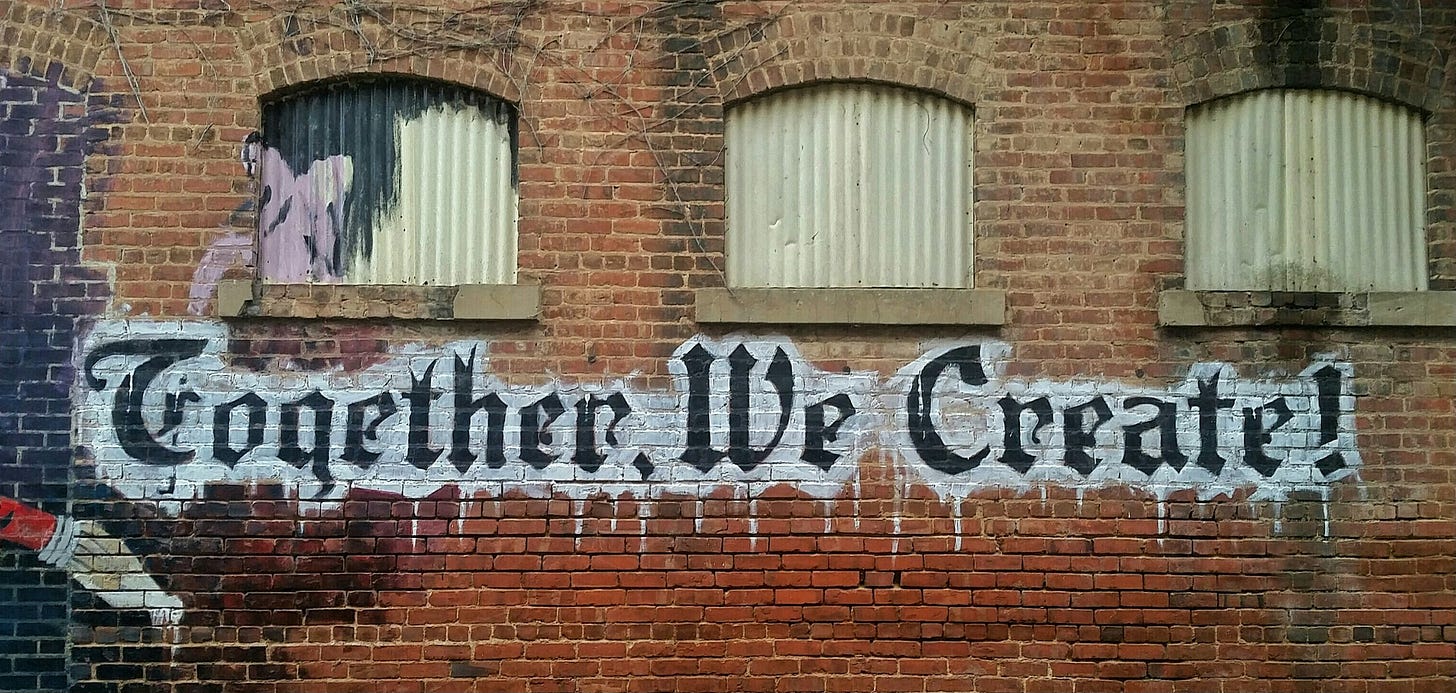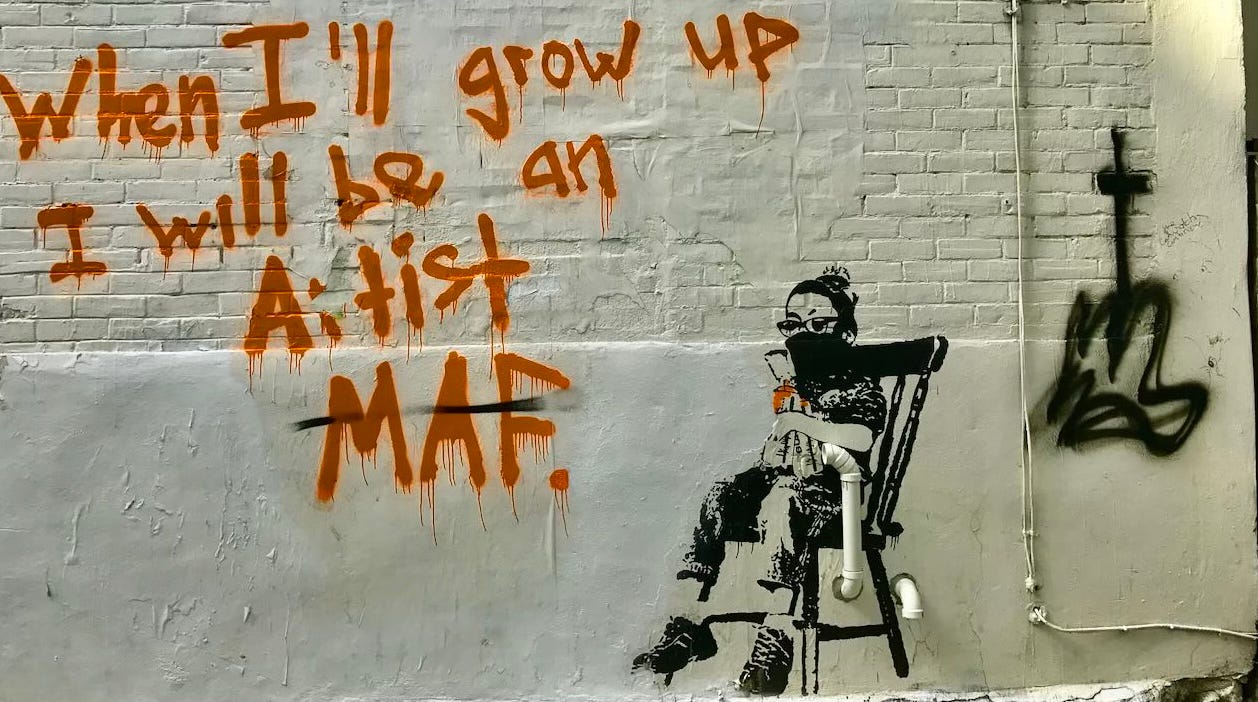There are many myths about creativity. In this issue, we will explore the design of creativity.
In my practice, I regularly hear people say, “I am not a creative person,” as if it were a trait they possess, akin to saying, “I have brown hair” or “I am tall.”
But the truth is that we are all creative. We may express creativity in different ways, but we all possess creative potential. What’s missing aren’t traits, but the conditions to elicit states of creativity regularly. Like design itself, we can design for creativity.
And you might be surprised to learn that most of that design is organizational, not personal. By creating systems in your life or organization, you’ll be able to tap into your creative potential and increase your creative output — whatever it looks like to you.
Designing for Creativity
Creativity — that act of generating something in response to a problem, situation, opportunity, or threat — is an inherently human quality and at the bedrock of design. It’s less a skill and more of a habit that is fostered through conditions and contexts. These conditions are what we can establish, nurture, and design for.
Let’s start with the social environment.
Creative Environments
Psychological safety enables creative risk-taking. Research consistently shows that environments where people feel safe to share unconventional ideas without fear of judgment or ridicule foster significantly more creative output. When individuals know they won’t be penalized for “failed” ideas, they’re more willing to explore novel approaches. Even the conceptualization of things as a failure is problematic, because a failure could be a step toward a new solution or idea. Failure is just an outcome, not a quality; we can reframe what it means to succeed by framing it as a learning opportunity.
Diverse experiences and cross-domain knowledge fuel innovation. Evidence suggests that people who engage with multiple fields, cultures, or disciplines tend to generate more original ideas. This “combinatorial creativity” happens when concepts from different domains intersect in unexpected ways. This is the reason why diversity in our organizations is so powerful. It’s not just about inclusion; exposure to differences prompts us to see, think, and imagine situations in different ways.
Constraints can paradoxically boost creativity. Studies demonstrate that having some limitations—whether time, resources, or specific parameters—often leads to more innovative solutions than complete creative freedom. The brain appears to work more creatively when it has boundaries to work within and problems to solve. When we set up our projects, finding and setting the right constraints can be a way to productively shape our creative potential
Creative Cognitions and Behaviour
Two individual-driven factors contribute to designing for creativity. The first is motivational; the second is social.
Intrinsic motivation trumps external rewards in driving creative work. Research shows that people produce more creative work when they’re internally motivated by interest, enjoyment, or personal satisfaction rather than external pressures like deadlines or monetary incentives. External motivators can actually diminish creative thinking, plus they need to be continually applied. When we can tap into what we enjoy, our values, and a bigger purpose behind what we do, we’re more likely to generate creative output. Popular books by Daniel Pink (Drive) and Simon Sinek (Find Your Why) are both great introductions to this line of work.
Regular exposure to nature and unstructured time supports creative thinking. Studies indicate that spending time in natural environments and having periods of mental downtime—away from structured tasks and digital stimulation—allows the brain’s default mode network to make new connections that facilitate creative insights.
Collaboration and solitude both play important roles. While brainstorming groups can generate many ideas, research shows that individuals often produce more creative solutions when they first work alone and then later share and build upon their ideas collectively. By giving yourself space, time, and attention your brain will naturally start to wander, which is a precursor for creativity. Separating yourself from the din of communications and the workplace by getting outside and into nature — even the park down the street — is good for your mental well-being while fostering a new way to think about what’s going on.
Nurturing Creativity
Creativity isn’t about where, it’s about when.
You can set this up by design in your organization and professional practice. All it takes, is time, care, and attention —- and practice. The more you give yourself the space to create, the more you will find creativity in your life and work.
Give yourself permission.
And if you ever need help, I do this with my clients for a living and would be happy to chat.
Go out there and have fun. Be your creative self.
Sources and Links For Further Learning
Psychological Safety and Creative Risk-Taking
Key References:
Amabile, T. M., & Gryskiewicz, N. D. (1989). The creative environment scales: Work environment inventory. Creativity Research Journal, 2(4), 231-253. (PDF) Psychological Safety and Creativity: The Glue That Binds a Creative Team
Ekvall, G. (1996). Organizational climate for creativity and innovation. European Journal of Work and Organizational Psychology, 5(1), 105-123. (PDF) Psychological Safety and Creativity: The Glue That Binds a Creative Team
Hunter, S. T., Bedell, K. E., & Mumford, M. D. (2007). Climate for creativity: A quantitative review. Creativity Research Journal, 19(1), 69-90. (PDF) Psychological Safety and Creativity: The Glue That Binds a Creative Team
Frazier, M. L., Fainshmidt, S., Klinger, R. L., Pezeshkan, A., & Vracheva, V. (2017). Psychological safety in organizations: A meta-analytic review. Journal of Management, 43(6), 1707-1741. Frontiers | The Influence of Psychological Safety on Students’ Creativity in Project-Based Learning: The Mediating Role of Psychological Empowerment
Constraints Paradoxically Boost Creativity
Key References and links:
Acar, O. A., Tarakci, M., & van Knippenberg, D. (2019). Creativity and innovation under constraints: A cross-disciplinary integrative review. Journal of Management, 45(1), 96-121. Why Constraints Are Good for Innovation
Tromp, C., & Baer, J. (2022). Creativity from constraints: Theory and applications to education. Thinking Skills and Creativity, 46, 101170. Creativity from constraints: Theory and applications to education - ScienceDirect
Rosso, B. D. (2014). Creativity and constraints: Exploring the role of constraints in the creative processes of research and development teams. Organization Studies, 35(4), 551-585. (PDF) Creativity and Constraints: Exploring the Role of Constraints in the Creative Processes of Research and Development Teams
Stokes, P. D. (2005). Creativity from constraints: The psychology of breakthrough. Springer Publishing Company. Creativity from constraints: Theory and applications to education - ScienceDirect
Diverse Experiences Fuel Innovation
Key References:
Hoever, I. J., Van Knippenberg, D., Van Ginkel, W. P., & Barkema, H. G. (2012). Fostering team creativity: Perspective taking as key to unlocking diversity’s potential. Journal of Applied Psychology, 97(5), 982-996. Being open, feeling safe and getting creative: The role of team mean openness to experience in the emergence of team psychological safety and team creativity - Sacramento - 2024 - Journal of Product Innovation Management - Wiley Online Library
Zhang, A. Y., Tsui, A. S., & Wang, D. X. (2011). Leadership behaviors and group creativity in Chinese organizations: The role of group processes. The Leadership Quarterly, 22(5), 851-862. Being open, feeling safe and getting creative: The role of team mean openness to experience in the emergence of team psychological safety and team creativity - Sacramento - 2024 - Journal of Product Innovation Management - Wiley Online Library
Intrinsic Motivation vs. External Rewards
Key References:
Amabile, T. M., Hill, K. G., Hennessey, B. A., & Tighe, E. M. (1994). The Work Preference Inventory: Assessing intrinsic and extrinsic motivational orientations. Journal of Personality and Social Psychology, 66(5), 950-967. FrontiersPubMed Central
Deci, E. L., & Ryan, R. M. (2000). The “what” and “why” of goal pursuits: Human needs and the self-determination of behavior. Psychological Inquiry, 11(4), 227-268. Intrinsic and Extrinsic Motivations: Classic Definitions and ...
Deci, E. L., Koestner, R., & Ryan, R. M. (1999). A meta-analytic review of experiments examining the effects of extrinsic rewards on intrinsic motivation. Psychological Bulletin, 125(6), 627-668. Negative Effects of Extrinsic Rewards on Intrinsic Motivation:
Byron, K., & Khazanchi, S. (2012). Rewards and creative performance: A meta-analytic test of theoretically derived hypotheses. Psychological Bulletin, 138(4), 809-830. Frontiers | The Influence of Intrinsic Motivation and Synergistic Extrinsic Motivators on Creativity and Innovation
Nature Exposure and Unstructured Time
Key References:
Atchley, R. A., Strayer, D. L., & Atchley, P. (2012). Creativity in the wild: Improving creative reasoning through immersion in natural settings. PLoS ONE, 7(12), e51474. PubMed CentralPLOS
Barr, S. J., Lowe, K., Spiegel, T., & Devine, K. A. (2024). Exploring the nature-creativity connection across different settings: A scoping review. Educational Psychology Review, 36(4), 1-45. Exploring the Nature-Creativity Connection Across Different Settings: A Scoping Review | Educational Psychology Review
McCoy, J. M., & Evans, G. W. (2002). The potential role of the physical environment in fostering creativity. Environment and Behavior, 34(3), 301-319. The influence of natural environments on creativity - PMC
Barr, S., Lowe, K., & Wiesenfeld, K. (2018). Conceptualising creativity benefits of nature experience: Attention restoration and mind wandering as complementary processes. Journal of Environmental Psychology, 59, 36-45. Conceptualising creativity benefits of nature experience: Attention restoration and mind wandering as complementary processes - ScienceDirect
Collaboration and Solitude Balance
Key References:
Paulus, P. B., & Brown, V. R. (2021). Alone versus together. In R. J. Coplan, J. C. Bowker, & L. J. Nelson (Eds.), The handbook of solitude (pp. 369-389). John Wiley & Sons. Alone Versus Together - The Handbook of Solitude - Wiley Online Library
Mullen, B., Johnson, C., & Salas, E. (1991). Productivity loss in brainstorming groups: A meta-analytic integration. Basic and Applied Social Psychology, 12(1), 3-23. (PDF) Collaborative Creativity—Group Creativity and Team Innovation
Harvey, S., & Kou, C. Y. (2013). Collective engagement in creative tasks: The role of evaluation in the creative process in groups. Administrative Science Quarterly, 58(3), 346-386. Enhancing Collaborative Ideation in Organizations - PMC
Baruah, J., & Paulus, P. B. (2008). Effects of training on idea generation in groups. Small Group Research, 39(5), 523-541.






Linus Pauling, 2 time nobel winner, required a shower to be installed in his office at caltech. He said some of his best ideas came while showering. I also have some good ideas in the shower. Designers for creativity should work more showers into their proposals obviously. I like Mihaly C.'s book Creativity, where I read about Pauling's brilliance.